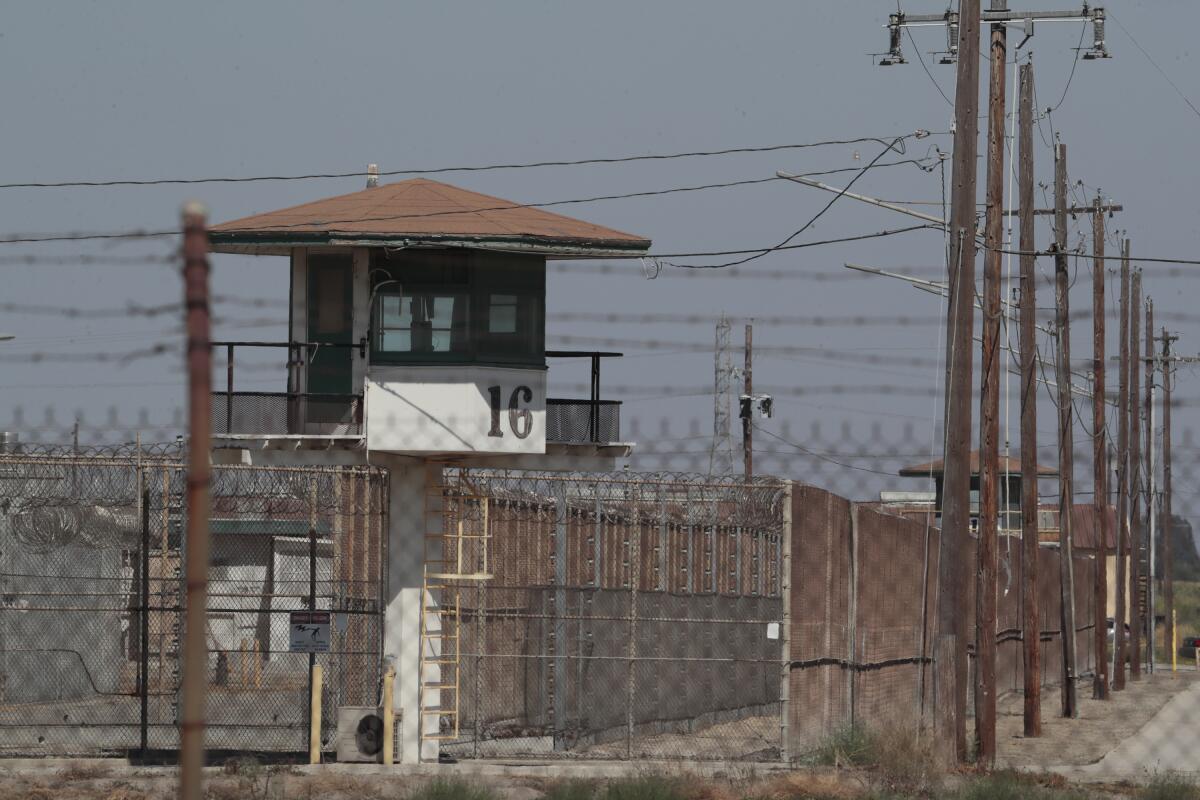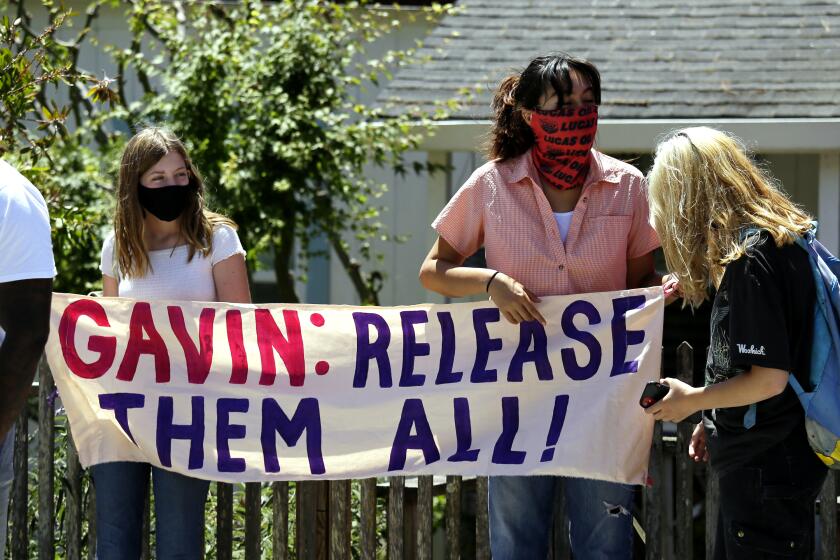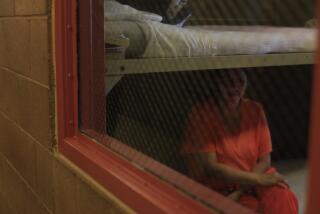Faulty thermometers, untrained screeners may have let COVID-19 into prisons, watchdog says

Vague testing guidelines, faulty thermometers and inadequate staff training are suspected of contributing to the COVID-19 outbreak in California prisons that has killed at least 54 inmates and sickened more than 9,500 others, the stateâs Office of Inspector General reported Monday.
âWithout properly functioning equipment and adequate training, the screening process was certainly compromised, and the risk of infected staff entering the prisons, thereby exposing others, could have increased,â the report noted.
The 47-page report, which focused on coronavirus screening of prison staff and âessential visitors,â such as contractors and attorneys, also criticized California Department of Corrections and Rehabilitation officials for withholding key COVID-19 tracking data for months, hampering the watchdogâs review.
The inspector generalâs office launched its examination in April, the month after the corrections system instituted screening at its 35 prisons. But the statewide directive that all staff and visitors be checked for signs and symptoms of COVID-19 was inconsistently applied, the report said.
Some prisons funneled vehicles through a single screening point where occupants were questioned and had their temperatures checked. Other prisons screened staffers at pedestrian entrances, apparently after they parked their cars and walked onto the grounds.
âWe found that this second approach increased the risk that staff or visitors may have walked into or through other work spaces without having been screened,â the report noted.
The inspector generalâs staff experienced the flaws firsthand, during multiple visits in May and June, the report said. It cited one visit to California State Prison Sacramento, where they âwalked all the way through the administration building and met with the wardenâ without being screened.
âBy that point, although our staff were eventually screened, the screening failed to accomplish its purpose: our staff could have already infected departmental staff,â the report said.
In addition to on-site visits, the inspector general sampled training records and surveyed 12,000 corrections staffers: The vast majority said they were always screened when entering the prisons, but an average of 5% said they were not.
âMany screeners apparently received no formal training at all concerning their prisonsâ screening processes, thus increasing the risk of allowing infected individuals to walk into prison facilities and expose others to the disease,â the report noted.
It went on to say that ânumerous screeners also identified multiple instances of thermometers malfunctioning during screenings,â registering inaccurate temperatures, sometimes because of weak batteries.
It was unclear in those cases if screeners then turned away the insufficiently tested staff and visitors or allowed them to enter the prisons anyway, the report said.
California has focused on freeing nonviolent offenders to combat the spread of coronavirus in prisons, but some have committed violent crimes.
In a letter responding to the report, Corrections Secretary Ralph Diaz said the department had taken steps to address the issues it raised.
âThe department recognizes the establishment of effective screening procedures is imperative to prevent and slow the spread of COVID-19 among staff, inmates and the public,â Diaz wrote.
âExecutive staff at the department are working closely with infectious disease control experts to ensure appropriate measures are put into place while simultaneously minimizing the impact of COVID-19 on our operations,â he said.
The inspector generalâs findings came as no surprise to Robert Davis, a correctional supervisor at California State Prison Los Angeles County and a chapter president with the California Correctional Peace Officers Assn., the guardsâ union.
âWe have been saying for months their testing is a failure, the thermometers donât work,â Davis said, describing the report as âpretty accurate.â
âOur thermometers at the beginning would either not work at all or would say our temperatures would indicate we were dead,â he said. âI was about 87 degrees most times.â
Davis said newer thermometers now in use seem to work better.
More than three-quarters of the stateâs prisons have reported at least one infection, and several are continuing to suffer significant outbreaks. State lawmakers and Gov. Gavin Newsom recently criticized corrections officials for the ill-fated transfer in late May of 121 inmates from a coronavirus-ridden prison in Chino to San Quentin, triggering an outbreak there that has killed at least 25 inmates and sickened more than 2,000 others.
In a letter to Assembly Speaker Anthony Rendon, who requested the investigation in April, Inspector General Roy W. Wesley said that corrections officials had withheld information and data used to track staff who had tested positive.
Although the same information on inmates was made publicly available, corrections officials withheld it for staff, citing confidentiality concerns.
The department has since relented, agreeing to provide it âas soon as possible.â
âNevertheless, the decision to initially withhold the information we requested remains a concern,â Wesley wrote. âThe departmentâs decision to change course at this point does not alleviate the adverse effect its initial decision had on our ability to fulfill our mission.â
Since May 30, nine corrections staffers have died of COVID-related illness, officials say.
Inmates said they felt helpless as coronavirus swept rapidly through Californiaâs prisons.
Inmate advocates say the numbers are alarming.
âNine is an extraordinary number of staff deaths. I cannot recall anything like that in any year,â said Michael Bien, a leading attorney for prisoners with medical and mental health issues. âRight now it is very dangerous for those in custody and those working there.â
Don Specter of the Prison Law Office, which represents inmates in a long-running federal lawsuit related to California prison overcrowding, called the inspector generalâs findings disturbing.
âSince staff are the main way that the virus is able to enter the prisons, the failure to properly screen and test staff to determine whether they are infected may have led to an increase in infections and illness among those incarcerated, other staff and members of the community,â he said.
More to Read
Sign up for Essential California
The most important California stories and recommendations in your inbox every morning.
You may occasionally receive promotional content from the Los Angeles Times.














